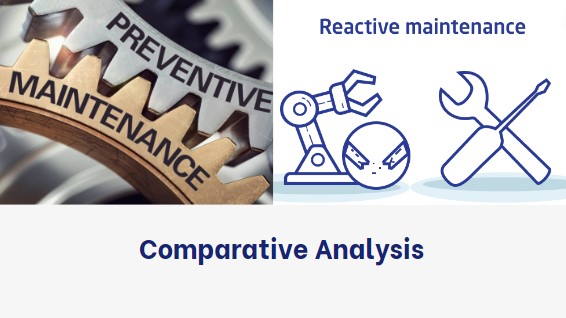
Preventive Maintenance Vs Reactive Maintenance: A Comparative Analysis
Viki Dongare |
22 Jan 2024 |
15:06 PM
- Setting the Stage: Understanding Maintenance Strategies
- The Crucial Role of Preventive and Reactive Maintenance
- Preventive Maintenance
- Importance of Choosing Preventive Maintenance
- Drawbacks: Common Challenges and Concerns
- Reactive Maintenance
- Understanding Reactive Maintenance
- Definition and Key Characteristics
- Drawbacks - Challenges Faced in Reactive Strategies
- A Proactive Approach to Facilities Management
- Integrating Preventive Maintenance in Facility Operations
- Preventive Maintenance vs. Reactive Maintenance Analysis
- Utilizing the Right Mix for Optimal Results
- Significance of Cost-Benefit Analysis
- Conclusion

The 7 Best Work Order Management System
Kirti Prakash 22 Jun 2024 | 07:02 AMDiscover the ideal workorder maintenance system to streamline your operations. Our comprehensive guide covers the latest in task management, scheduling efficiency, and maintenance tracking to boost productivity and minimize downtime....
Welcome to the realm of maintenance strategies, where the efficiency of operations hinges on the delicate balance between preventive and reactive approaches. In this section, we'll embark on a journey to comprehend the essence of maintenance strategies, with a keen focus on the critical interplay between preventive and reactive maintenance.
Setting the Stage: Understanding Maintenance Strategies
Maintenance is the backbone of operational success. Efficiently managing assets and equipment is not just a business function; it's a strategic imperative. Setting the stage involves delving into the fundamental principles that govern maintenance strategies. Whether it's the meticulous planning of preventive measures or the responsiveness inherent in reactive strategies, a holistic understanding is paramount.
The Crucial Role of Preventive and Reactive Maintenance
In the realm of maintenance strategies, two titans stand tall: Preventive Maintenance and Reactive Maintenance. Preventive maintenance, characterized by scheduled inspections and proactive tasks, aims to forestall potential issues. On the other hand, reactive maintenance involves addressing issues as they arise, responding swiftly to unexpected failures.
These two methodologies play a pivotal role in the operational landscape. We'll explore how preventive maintenance minimizes unplanned downtime, lowers costs, and prolongs equipment lifespan. Simultaneously, we'll delve into the agility of reactive maintenance in handling immediate concerns and averting long-term implications.
As we journey through this comparative analysis, we'll unravel the complexities and synergies between these strategies. How do they impact resource allocation? What risks do they mitigate, and what long-term savings do they offer? The answers lie in a nuanced understanding of their respective financial impacts.
Preventive Maintenance
What is Preventive Maintenance?
At its essence, Preventive Maintenance is a systematic and planned approach to ensure the continuous functionality of equipment, machinery, and facilities. This strategy revolves around scheduled inspections, routine tasks, and proactive measures aimed at identifying and addressing potential issues before they escalate into costly problems.
Definition and Core Principles
Preventive Maintenance is grounded in a set of core principles that collectively contribute to its efficacy. It involves regularly scheduled inspections to identify wear and tear, replacement of worn components, and the execution of routine tasks such as lubrication and calibration. This proactive strategy relies on data-driven decision-making, historical performance analysis, and adherence to manufacturer guidelines.
Understanding the core principles is pivotal. It's not merely about fixing what's broken; it's about optimizing performance, reducing downtime, and extending the lifespan of valuable assets. By adhering to a preventive maintenance program, businesses can mitigate the risk of unexpected breakdowns, enhance safety, and ultimately save costs in the long run.
As we navigate through the world of Preventive Maintenance, we invite you to explore the tangible benefits and potential drawbacks associated with this strategic approach.
Benefits
When it comes to maintenance tasks, the benefits of preventive maintenance are substantial, contributing to optimal operational efficiency and cost-effectiveness. Let's explore these advantages in detail.
Lower Maintenance Costs
The implementation of a preventive maintenance program leads to a substantial reduction in overall maintenance costs. Proactively addressing potential issues during scheduled inspections helps businesses avoid costly emergency repairs and extends the lifespan of equipment, thereby minimizing the financial burden associated with reactive approaches.
Early Detection of Malfunctions
One of the paramount benefits of preventive maintenance schedules is its capacity for the early detection of malfunctions. Through regularly scheduled inspections, businesses can identify wear and tear early on, facilitating timely interventions before minor issues escalate into major problems. This early detection not only minimizes repair costs but also prevents unexpected breakdowns, ensuring uninterrupted operations.
Reduced Downtime
Strategically designed to minimize downtime, preventive maintenance schedules proves instrumental in operational continuity. By addressing potential issues before they lead to downtime, businesses can significantly reduce the time spent on emergency repairs. This translates into increased productivity and enhanced customer satisfaction.
Longer Asset Life Spans
Maximizing the lifespan of assets is a fundamental goal of preventive maintenance. Routine tasks such as lubrication, calibration, and timely replacements contribute to the extended longevity of equipment and facilities. This not only optimizes the return on investment but also aligns with sustainable and responsible resource management.
Importance of Choosing Preventive Maintenance
Selecting preventive maintenance goes beyond mere breakdown avoidance; it's a strategic decision aligned with long-term business goals. This proactive approach ensures reliability, safety, and operational success, underscoring the significance of fostering a culture of efficiency and resilience.
Drawbacks: Common Challenges and Concerns
While the benefits of preventive maintenance are substantial, acknowledging common challenges and concerns associated with this approach is crucial. This understanding allows businesses to implement effective strategies to mitigate risks.
Reactive Maintenance
Reactive maintenance emerges as a dynamic yet challenging approach, reacting swiftly to equipment failures as they occur. In this section, we'll delve into the essence of reactive maintenance, exploring its definition, key characteristics, drawbacks, and the challenges faced in executing reactive strategies.
Understanding Reactive Maintenance
Also known as "breakdown maintenance," is a maintenance strategy where repairs and interventions are carried out in response to equipment failures or unexpected issues. This approach involves addressing problems as they arise, often resulting in unplanned downtime and higher chances of extensive damage or disruptions to operations.
Definition and Key Characteristics
Reactive maintenance is characterized by its responsiveness to unexpected breakdowns. It involves the direct response to identified problems, often relying on quick fixes and immediate solutions to restore equipment functionality. This approach contrasts with the proactive nature of preventive maintenance, which focuses on scheduled interventions to prevent issues.
Drawbacks - Challenges Faced in Reactive Strategies
Reactive maintenance, while a common approach in many organizations, comes with a host of drawbacks and challenges that can impede operational efficiency. One primary challenge is the increased downtime associated with this strategy. Addressing equipment failures only when they occur often leads to unexpected halts in operations, causing disruptions to production schedules and reducing overall productivity.
Higher repair costs are another significant drawback of reactive maintenance. Delaying maintenance until equipment failure occurs may result in more extensive damage, requiring more time, routine inspections and resources for repairs. The reactive approach tends to be more costly in the long run compared to preventive or predictive maintenance, where issues are identified and addressed proactively.
Safety hazards are inherent in reactive maintenance practices. Sudden equipment failures can pose risks to both personnel and the surrounding environment. Emergency repairs may require maintenance team to take immediate action, increasing the likelihood of accidents and injuries. This creates an environment of uncertainty and stress for maintenance teams and other personnel.
Unlike predictive and preventive maintenance tasks, which focus on identifying and addressing issues before they escalate, reactive maintenance is often characterized by unexpected equipment downtime. This reactive nature makes it challenging to plan and schedule maintenance activities efficiently. The lack of a structured approach can result in increased chaos and reduced overall maintenance effectiveness.
To overcome the drawbacks of reactive maintenance, many organizations are shifting towards a more proactive approach. Predictive maintenance, for instance, relies on data and analytics to predict potential failures and schedule maintenance activities accordingly. This helps minimize downtime, reduce repair costs, and enhance overall safety.
A Proactive Approach to Facilities Management
In facilities management, a proactive approach is increasingly recognized as a strategic imperative. Shifting away from reactive maintenance practices, which are often plagued by challenges such as increased downtime and higher repair costs, organizations are embracing preventive maintenance to optimize facility operations.
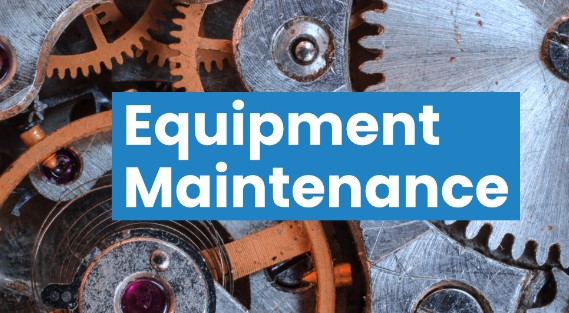
Reactive maintenance, marked by addressing issues only when they arise, can lead to disruptions in facility operations and heightened repair expenses. The unpredictable nature of equipment failures often results in unexpected downtime, impacting productivity and the overall efficiency of the facility.
To overcome the drawbacks of reactive maintenance, preventive maintenance is being integrated into facility management strategies. Unlike reactive approaches, preventive maintenance involves systematically scheduling tasks to identify and address potential issues before they escalate into costly problems. This proactive approach aims to reduce downtime, minimize repair costs, and create a more structured and efficient maintenance team.
Integrating Preventive Maintenance in Facility Operations
Implementing preventative maintenance tasks involves regular inspections, equipment checks, and timely repairs based on predetermined schedules. By taking a proactive stance, facilities can enhance the reliability of critical systems, optimize resource utilization, and create a safer environment for occupants.
Predictive maintenance, another facet of a proactive strategy, leverages technology and data analytics to foresee potential equipment failures. This approach allows facilities managers to make informed decisions, prioritize maintenance activities, and allocate resources efficiently.
The integration of preventive maintenance vs other predictive approaches in facility operations marks a crucial shift towards a proactive approach, addressing the challenges posed by reactive maintenance. By systematically scheduling maintenance tasks, organizations can mitigate the risks of increased downtime and higher repair costs. This strategic shift not only enhances the reliability of facility systems but also contributes to a more efficient and resilient facility management strategy.
Preventive Maintenance vs. Reactive Maintenance Analysis
Reactive and Preventive Maintenance strategy represent two distinct paradigms in facility management, each offering unique strategies and outcomes. This comparative study navigates through the advantages and drawbacks of these maintenance approaches, underscoring the importance of striking the right balance for optimal results in facility operations with its predictive maintenance features.
Preventive Maintenance, as a proactive strategy, centers on addressing potential issues before they burgeon into major problems, employing scheduled inspections, routine tasks, and systematic checks for equipment reliability.
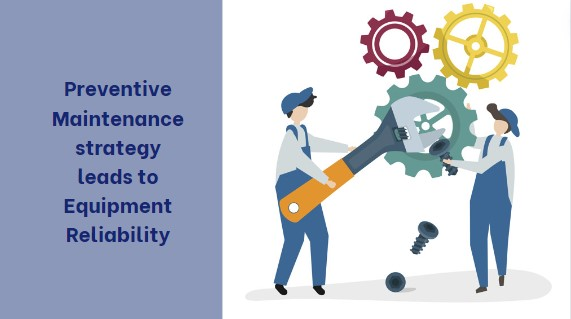
The benefits include reduced downtime through early issue identification, cost savings by preventing extensive damage, and an enhanced safety environment. However, drawbacks include the resource-intensive nature of planning and executing preventive tasks and the potential for over-maintenance without data-driven insights, leading to unnecessary costs.
Reactive Maintenance on the other hand, operates on a different paradigm in facility management. It employs a strategy focused on addressing issues only when they manifest, responding to equipment performance as they occur. The advantages of this approach include the ability to swiftly resolve immediate problems and allocate resources based on immediate needs, ensuring extended equipment lifespan and reducing upfront costs associated with regular maintenance activities.
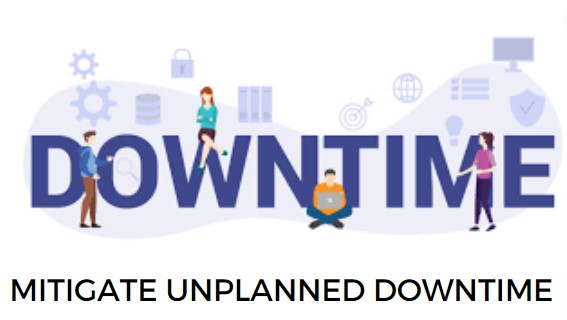
However, Reactive Maintenance comes with its set of drawbacks, including the potential for increased downtime as failures are addressed when they occur, impacting equipment performance. Moreover, waiting for issues to escalate often results in higher repair costs due to more extensive damage. Additionally, emergency repairs in a reactive context pose safety risks, increasing the likelihood of accidents and injuries.
Utilizing the Right Mix for Optimal Results
Finding the right mix of preventive and reactive maintenance is essential for optimal results. A balanced approach involves leveraging preventative maintenance for critical systems and equipment, while allowing for reactive responses when immediate attention is required. Incorporating data-driven insights and predictive maintenance strategies can further enhance the effectiveness of the maintenance program, ensuring a resilient and cost-efficient facility management strategy. The key lies in striking a balance that aligns with the unique needs and priorities of the facility.
Significance of Cost-Benefit Analysis
Resource Allocation: Optimizing Budgets for Maintenance Excellence
Efficient resource allocation plays a pivotal role in achieving maintenance excellence, where the incorporation of Preventive Maintenance tasks demands a proactive approach. Allocating resources for scheduled inspections and routine tasks ensures a strategic and preventive stance, contrasting with Reactive Maintenance's as-needed basis, which optimizes immediate resource utilization. Achieving the right balance becomes the key challenge, harmonizing operational goals with budget constraints for optimal outcomes.
Risk Mitigation: Proactively Managing and Mitigating Risks
In the dynamic field of facility management, inherent risks are efficiently managed through Preventive Maintenance, averting potential issues before they escalate and minimizing the chances of emergency repairs and safety hazards.
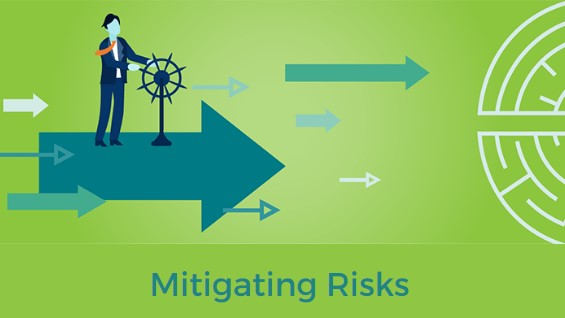
Conversely, Reactive Maintenance, though addressing immediate problems, poses risks such as prolonged downtime, elevated repair costs, and operational disruptions. Embracing predictive maintenance further elevates risk management, utilizing data-driven insights to anticipate and prevent potential equipment failures, fostering a comprehensive and forward-looking maintenance strategy.
Long-Term Savings: Establishing a Sustainable Maintenance Framework

Beyond immediate costs, the comparative analysis extends to long-term savings that includes cost savings. Preventive Maintenance establishes a sustainable framework by extending the lifespan of assets, minimizing downtime, and reducing overall maintenance costs. In contrast, Reactive Maintenance may provide short-term cost efficiency but often results in higher repair costs, impacting the overall financial health of the business.
Conclusion
In the intricate landscape of maintenance strategies, the balance between Reactive and Preventive Maintenance strategy emerges as a critical factor shaping operational efficiency. This exploration delves into the distinct realms of these approaches, shedding light on their advantages, drawbacks, and the strategic significance of a balanced mix.
Preventive Maintenance, with its proactive nature, proves effective in minimizing downtime, lowering costs, and enhancing safety. Reactive Maintenance, while swift in addressing immediate concerns, carries the burden of increased downtime and higher repair costs.
Additionally, embracing predictive maintenance strategy, with its data-driven foresight, further fortifies the facility management strategy, enabling businesses to predict and prevent potential equipment failures. Integrating this predictive approach ensures a holistic and future-ready maintenance framework, optimizing operational efficiency and long-term savings.

Striking the right balance, incorporating data-driven insights, and optimizing resource allocation is the key to a resilient and cost-efficient facility management strategy.